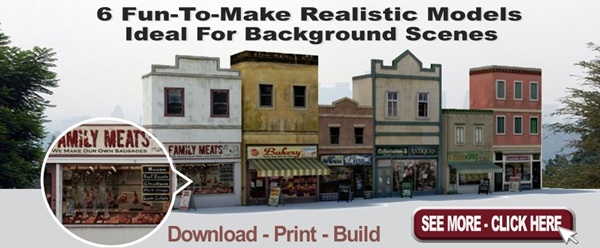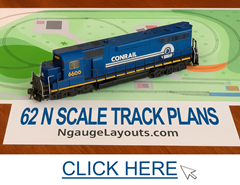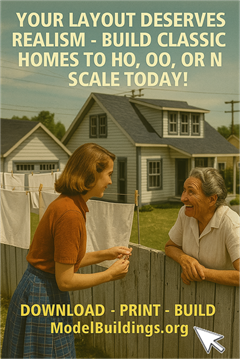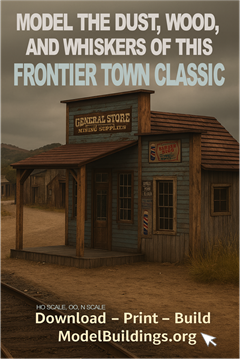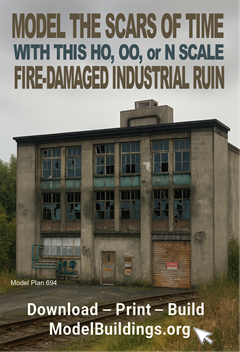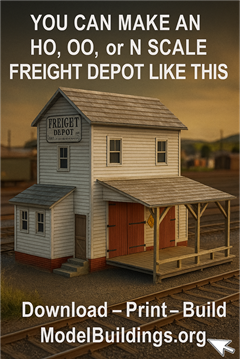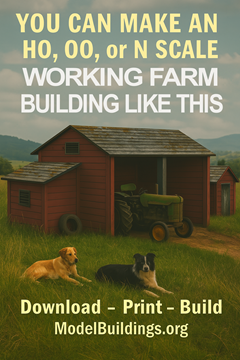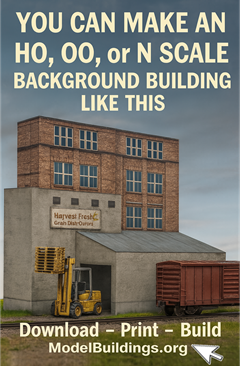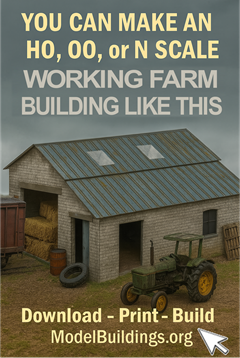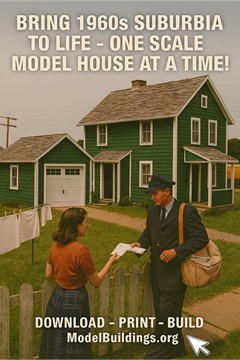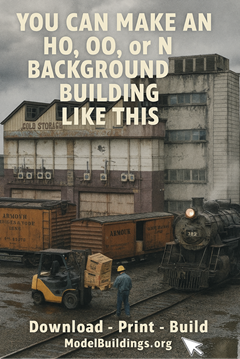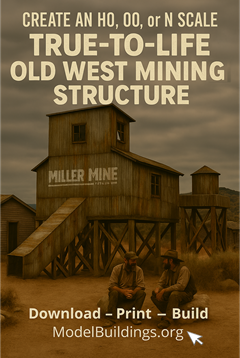Everything on model trains, model railroads, model railways, locomotives, model train layouts, scenery, wiring, DCC and more. Enjoy the world's best hobby... model railroading!
5 FREE Scale Calculators For Model Railroaders To Use and Share With Friends
There are now 5 FREE model railroad calculators for you to use at http://www.modelbuildings.org/free-calculator-tools.html
1. Scale Convertor Calculator
2. Scale-To-Scale Conversion
3. Track Grade Convertor
4. Helix Design Convertor
5. Scale Speed Convertor
Try them out – they are free to use. You are welcome share the link with your friends in the hobby on Facebook, Twitter, Youtube, Google Plus, and by email etc.
NOW AVAILABLE! 12 Model Buildings for O SCALE (YES…O SCALE), HO, OO, Z and N Scale Model Railroads
There have been several requests for some downloadable buildings to be made available in O scale, so 12 designs (already available in other scales) have been adapted for O scale enthusiasts. Trust me; it wasn’t an easy or inexpensive job, as a lot of work was required to retain the HIGH QUALITY photo realistic effects, so the buildings could be safely enlarged to O scale without losing clarity. The designs were also specially adapted to print in both A4 size [letter size] and in A3 size [tabloid size].
Although it would be good to make the whole range available in O scale, the cost and time factor is prohibitive at this stage. So, this is a test market to see how much demand there is for O scale buildings of this kind. Depending on the response, more buildings will hopefully become available in future months.
The designs are now available in O scale at http://www.oscalebuildings.com or for HO, N, Z, and OO scale at http://www.modelbuildings.org/low-relief-buildings-G.html
The buildings can be easily constructed using corflute to make them very strong.
POLL RESULTS: When do you spend most time working on your layout?
Our last poll of model railroaders asked: When do you spend most time working on your layout?
Since posting the question a few days ago, about 11,000 people visited this blog and 528 people voted.
Here’s what they said:
– Throughout the year (seasons make no difference) (48%)
– During the colder months (27%)
– During the warmer months (5%)
– I don’t have a layout yet (20%)
So the time of the year doesn’t make much difference for about half of us, with most others favoring the colder months.
4×8 Train Table or Grid Type Structure?
Gary has a question for readers:
“I am re-entering the model railroad hobby after decades. What is best approach for setting up a layout? A solid table (4×8) or grid type? What are the advantages / disadvantages of each? Thanks for any suggestions.”
What’s the Best Model Train Software?
Ed wants to hear the personal preferences and opinions from readers relating to model railroad software and asks:
“What do readers think is a good layout design software. I’ve been trying to download xtartk cad .I just can’t figure out why it will not download right.”
How To Go About Valuing A Layout
Here is a question for readers from John. He does appreciate that this blog does not run buy/sell/trade ads, or publish readers contact details/emails etc, but would like guidance from readers on how best to have layouts valued and sold:
“I have a train room in a house that I built and might be moving it? I have children and the grand children ages 3-21 they all love to play with the S scale American flyer 1959 trains. My problem is it’s difficult to make time to do the required maintanace so they are usable. The set up is a simple two track oval with a 3rd siding with tressels. It’s a 8×12 ft layout. I have been adding to this over the years and have a lot of trains, switches and accessories . How have others dealth with this? Thank you for looking at this. Any ideas on how to have the layout or trains valued?
On30 Christmas Village Layout
Mike asks readers:
“I inherited a Hawthorne village set including all the ceramic houses and On30 train track (dc). I have built an L table out of 2 4×8 sheets of plywood and foam. Has anyone here made a nice permanent layout out of the Hawthorne village houses? Most of what I find online is temporary for Christmas.”
Which Model Train Manufacturer?
Dhiraj asks readers:
“I am Amateur Train Modeler, starting with my first HO train. It might sound silly but I wanted to know which train set manufacturer should be looking at when I am buying my train set? Eventually I want to take the model train set to JMRI Controlled train model. I understand every train set has prons and cons..So I want to start right. Thank you so much.”
POLL RESULTS: If as part of a divorce settlement your ex took all your trains – what would you do?
443 model railroaders voted in our last poll which asked – If as part of a divorce settlement your ex took all your trains – what would you do? Results were as follows:
— Sell my organs to buy new stuff (58%)
— Accept it without fuss (24%)
— Quit model railroading (10%)
— Step under a train (8%)
Starting Off With DCC
Rowan asks readers:
“I would appreciate some advice with selecting a power pack for my model railway. I have read the various features and will eventually head towards DCC and a hand held, but I’m not ready for that just yet. Can an experienced railroader recommend a not too expensive power pack that will be suitable for the future growth in my layout?
19 FREE Mini Posters For Your Model Train Layout Room
Here are 19 “mini-posters” you can print out and hang near your model train layout or workshop. They are totally free to download and share with friends via email, Facebook, Google plus etc. The signs can be printed on A4 (8.3 x 11.7 inches) paper.
Entertain (and educate) your friends and visitors with these fun signs. Who said model railroaders don’t have a sense of humor? Have fun! Download free courtesy of http://www.modelbuildings.org/free-train-signs.html
Older Rolling Stock with Plastic Wheels?
Gary asks readers:
“Hi, I have a bunch of older rolling stock with plastic wheels that snap in and plastic horn couplers attached to the trucks. I’ve tried to convert to Kadee and metal wheels but I find I need to almost wreck the car to make it all fit. Is it worth it or should I just get newer cars.”
Sound Car Decoder Wiring
Dan asks readers:
“I have the Kato ho scale Metra can car and I have wired up the two pickup wires, and the speaker wires. I can get the decoder to turn on and off, but no sound effects and I am wondering how I wire the lights up to the existing light control board or do I have to buy new LEDs and wire them separately and remove the factory control board? I really need the help! I am a newbie to HO dcc.”
Atlas Remote Turnout Switches
Dick asks readers for advice:
“I have Atlas remote turnout switches that I need AC power for. Don’t want them to be run by the controller. How can this be resolved? Is the voltage 120 or 12 VAC and watt wattage? I have a separate 12, 5 and 3 VDC power supply for my LED’s.I have a 12 VDC cigarette lighter inverter, can this be used. If so,does it need any modification.”
